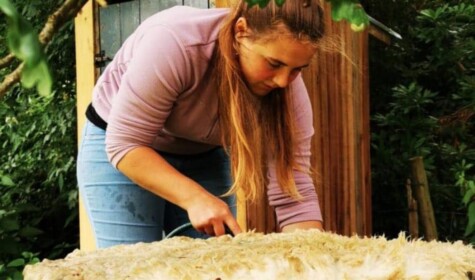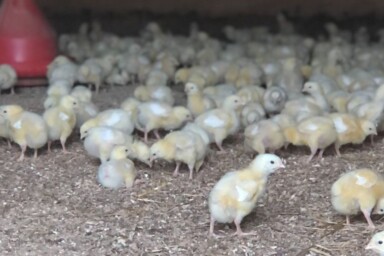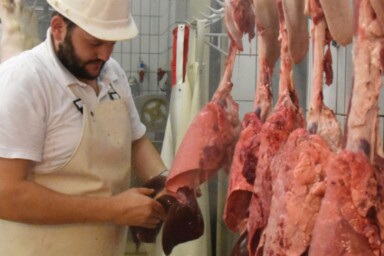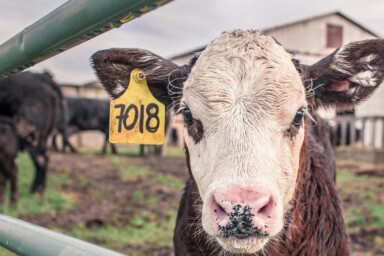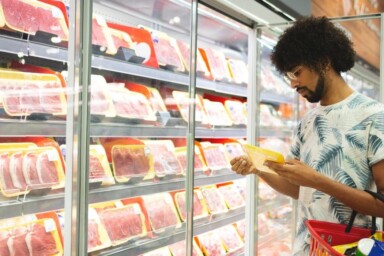In 1812, our watermill at Woodborough, near the village of Woollard, that for centuries had ground corn, thickened cloth and beat metal, was recorded as a leather mill. Demand for leather was high due to the Napoleonic war and the large water driven hammers, previously used by the Bristol Brass Company, were now being employed in the leather making process.
It is likely that this was overspill from the ancient Woollard Tannery across the road, where an ox gin (a paved circle that a tethered ox walks round attached to a grinder) ground the oak bark that added tannin to the pits of mineral rich water diverted from the nearby Candlestick Brook.
Woollard Tannery mainly made heavy duty leather for horse harnesses and in 1861, it was supplying enough to keep three saddler/harness makers busy in the nearby village of Pensford. It finally closed in the late 1880s.
Until the end of the 19th century most tanneries in the UK were ‘small scale domestic affairs’ in rural villages like Woollard, but these were almost entirely replaced by urban industrial operations in the early 20th century.
Chemical or mineral tanning had been invented in the mid-1800s and quickly became the most popular method as it cut the length of the process down from many months to a matter of days. Currently, around 90% of all tanned leather worldwide uses chromium, and while the disposal of tannery waste is regulated in many countries, it is often the source of environmental pollution and a danger to human health.
Through the 2nd half of the 20th century reliance on skilled traditional tanners and leather workers in the UK declined as cheap foreign labour and the development of synthetics undercut them. The Heritage Crafts Association cite, ‘inaccurate negative perceptions of leather that may be driving customers to synthetics’ as an additional threat to the age-old skills.
The Campaign for Local Abattoirs has, for some time, been concerned about the effect of the collapse of the hides and skins market on the viability of small abattoirs. (According to AHDB, hide prices have dropped by almost two-thirds over the past seven years.) This inevitably has a knock-on effect for those producers who want to protect the provenance of their meat, by forcing up the price of private kill to make up the deficit created by the lack of value in what was once a valuable commodity.
It is often when a situation reaches crisis point that imagination and innovation steps in. Impending environmental disaster is an ever-increasing threat and the need for food production to become sustainable is rarely out of the news. Whilst the debate rages over the best way to feed an increasing human population without destroying the planet, many individual farmers are looking for ways to reduce their carbon footprint, improve the biodiversity on their farms and achieve zero-waste in their produce. All this while still needing to make a viable living.
For those of us that believe we need to eat less but better and more localised meat, the continuation of small local abattoirs is essential. But the issues of sustainability go beyond that. Over the past century, the industrialisation of farming has been a seemingly unstoppable force. The pressure to produce more and more, cheaper and cheaper, quicker and quicker has been irresistible and farmers have been led to believe that their only choice is to jump on the treadmill or get left behind. Farming communities, and the wider infrastructure that included skilled tanners and leatherworkers, have become further victims of these changes. The systems that kept rural businesses such as Woollard Tannery running almost unchanged for hundreds of years have broken down, contributing significantly to villages becoming little more than attractive residences for urban commuters.
Now many livestock farmers are looking for ways to maintain a sustainable stocking density by getting the best they can from each animal. This is more than just a question of economics – nobody wants to damage the land or waste a large proportion of something they have worked hard to produce.
Teresa and Charles Allward of Langford Farm, for instance, are looking for outlets for all parts of their organic beef. They already have customers for the bones, offal, suet and fat. They would now like to process their hides, but like most farmers don’t know how to go about it and, in fact, have relinquished ownership of their hides to the abattoir once their cattle have been taken in. This once added enough value to the process to enable abattoirs to keep the cost to farmers low, and the farmers could assume their hides were being utilised. The current reality is that many hides and skins end up being destroyed.
With this in mind, a new business venture, Grady + Robinson, is being set up to pilot a leather supply chain with traceability at its heart. The development of a system where designers and leatherworkers can choose materials from farms with exemplary environmental and animal welfare standards will enable farmers such as the Allwards to add value to their business and in doing so improve their sustainability.
Calypso Taylor keeps rare breed Portland sheep and is taking matters into her own hands. She believes that we need to be ‘promoting more pride in each individual animal and what it can provide us with, using as much of it as we can and bringing those parts currently treated as by-products “into the forefront”’.
Having been only able to find one organic tannery, charging a fee that she felt made her sheepskins financially unviable and with ‘everything else shipped off and smothered in chemicals’, she decided to have a go herself.
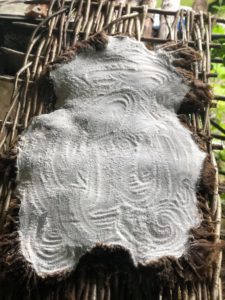
Ultimately, whatever the materials used in the process, the basic order is the same: ‘Salt, rehydrate, flesh, resalt, soften / break, smoke’.
Not everyone is prepared or capable of going to such lengths to get the most out of their livestock. As with local abattoirs, there is a need for the establishment of local tanning and leatherworking facilities that enable smaller-scale producers to add value to their products. This is a vital antidote to an increasingly industrialised, centralised and free market agriculture that tends to leave smaller producers behind. When the large corporations and international markets fail us, it is those with the imagination to re-learn old skills that begin to fill the void.
